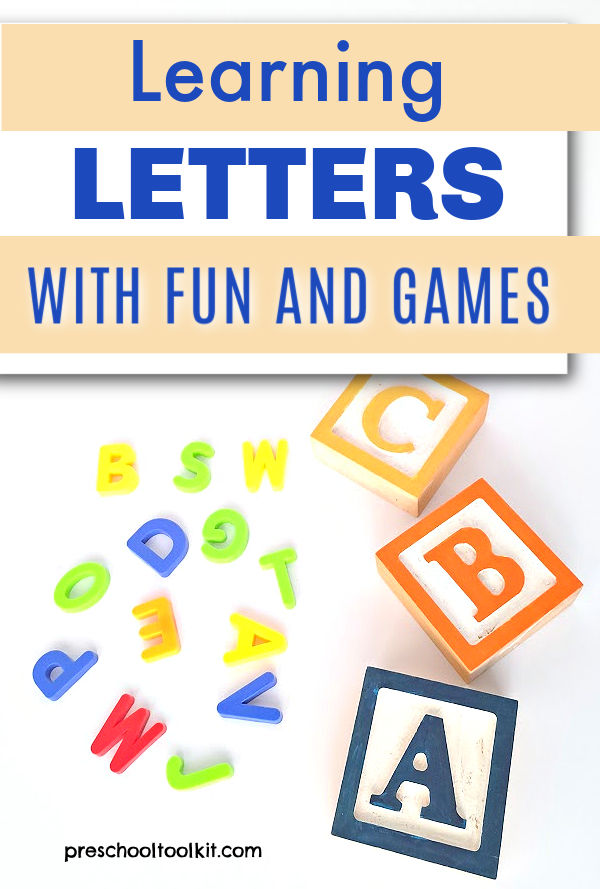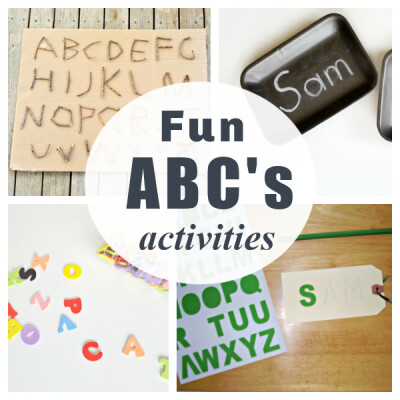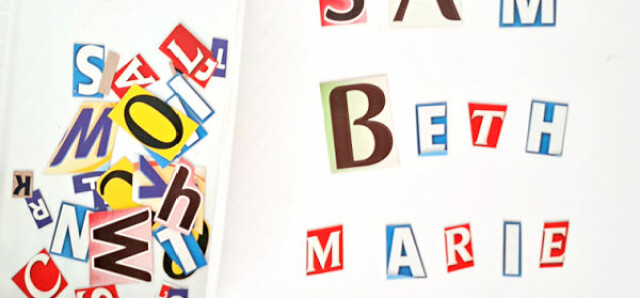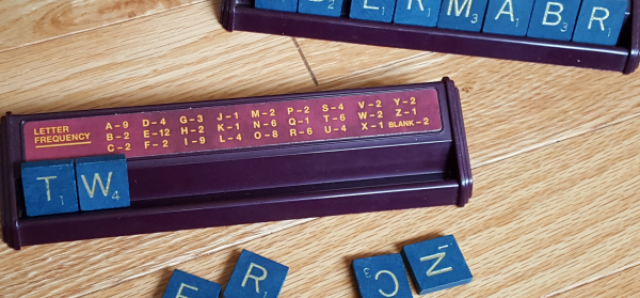How to Teach Letters of the Alphabet Without Really Teaching
Fun literacy activities help prepare kids for learning the letters of the alphabet. Simple ABC activities that engage and entertain result in meaningful hands-on learning as kids play.
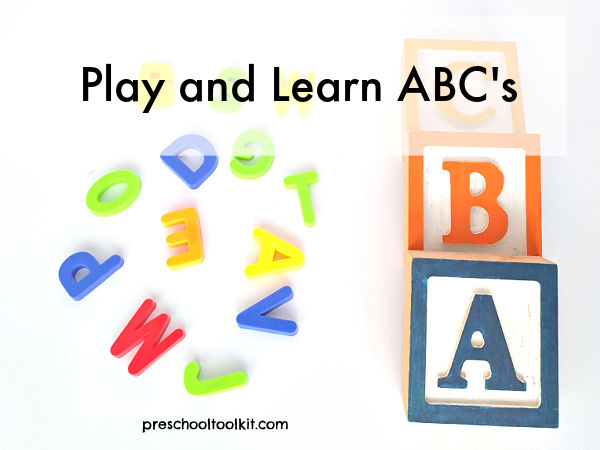
Privacy and Disclosure for information on cookies and affiliates
It's never too early to instill a love of ABC's! From singing the ABC song to writing a letter to grandma, the alphabet is our friend for life.
We can prepare preschoolers for learning the ABC's in fun ways that build future reading and writing skills.
These tips and ideas will help you discover and plan ways to support early literacy skills in daily activities and play.
The alphabet journey is an exciting adventure for both students and teachers:
- A preschooler feels a sense of pride when he recognizes the first letter of his name.
- Teachers and parents know the value of learning the alphabet for future learning. (We are enriched every day by our ability to read and write).
Learning, and understanding, the alphabet can be a challenge for little learners. Helping them reach this goal is an important undertaking for teachers and parents.
This guide provides insight into how to teach the alphabet to preschoolers.
How to Teach (or Not Teach!) ABC's
________________________________________________
Table of Contents
- Play to Learn ABC's.
- Read, Read, Read.
- Teach with Fun Activities
- Know When to Introduce Letters of the Alphabet
- Recognize Learning Readiness
- Clarify Your Goals
_________________________________________________
1. Play to Learn ABC's.
Support child-led activities.
Simply put, the best way to help preschoolers learn new things, including the alphabet, is to let them play.
Provide lots of opportunities for kids to engage in self-directed play.
They can achieve this through hands-on interaction and experimentation with materials, both toy-based and real-life options.
- Does your toddler love singing the ABC song as he washes his hands?
- Has your preschooler recognized a letter on the label of his toy car?
Support child-led activities with colorful and interesting materials that are accessible for play times.
- letters of the alphabet puzzle
- alphabet blocks
- magnetic letters on a cookie sheet
- paper and crayons
- ABC books
Preschoolers need lots of play time to make learning meaningful.
(They don't need tutorials or work sheets. They don't need a lot of sitting. Even grownups become dull with too much paper work and sitting.)
They do need time to fully engage in an activity, to maintain interaction, to practice developing skills and learn new skills.
Before they can grasp the concept of letters leading to words leading to reading and writing, kids need to practice cognitive skills (including language and visual) and fine motor skills.
Related: Pre-Reading Skills article from ABC's of Literacy
Strengthen fine motor skills.
Kids require strong fine motor skills to hold pencils and make the required movements to reproduce letters. Playing with a variety of toys and materials strengthens the muscles needed for later writing skills, including hand-eye coordination and pencil grasp.
Activities like squeezing play dough, tracing letters with a finger, digging and pouring in a sensory bin, and coloring with crayons will help build strong hands and fingers.
Related: Fine Motor Play with Modeling Clay
Provide plenty of time for hands-on play in the early years to help your preschooler develop the fine motor skills required for writing in later years.
2. Read. Read. Read.
If you've been reading regularly to your toddler or preschooler, you've already started 'teaching' the alphabet.
Reading to kids in their early years is fundamental. One on one, or in small groups, reading is a powerful tool for introducing kids to written words.
There are lots of ways to get in some reading every day.
- PreK Pages recommends nursery rhymes as a good foundation for building literacy skills.
- Schedule regular reading circles in your classroom or homeschool.
- Make books available on a low shelf or in a basket so kids can 'read' on their own.
Related: Tips for Reading to Preschoolers
Instill a love of books early on in your journey that will eventually lead to learning the letters of the alphabet.
Books can be read on any topic. Involve kids in choosing titles and reading spaces.
Explore a variety of fun options for telling stories, such as puppet shows and charades.
3. Teach with Fun Activities
Kids build cognitive skills (reasoning, remembering, recognizing) by choosing, experimenting and discovering, and by repetition.
hands-on play and meaningful interactions, to build interest and strengthen childhood skills.
Flash cards and 'letter of the week' tactics as alphabet prompts may play a part in your overall program, but should not be relied on as your sole learning tools.
The concept of teaching the alphabet should be guided by the practice of learning through play.
This post with early literacy activities provides some fun options for exploring letters of the alphabet.
The crafts and activities offer a variety of hands-on ways to introduce ABC's in your daily schedule.
4. Know When to Introduce Letters of the Alphabet
There are various guidelines from educators in the early childhood field of study on how to introduce letters of the alphabet.
Some early educators recommend starting with upper case, while others opt for lower case first.
Some indicate that alphabet letters can be introduced in a predetermined order, or that vowels should be introduced first.
You can intentionally integrate related play opportunities into your daily schedule:
- at circle time, with a helper 'name' or letter of the week displayed on a card
- during an arts and craft session, with a printed letter to color and cut out.
You can also set up literacy activities in your centers.
- alphabet blocks in the block corner
- felt letters on the flannel board
- pictures of letters to paint on the easel
- wood, plastic, and foam letters to weigh on a scale at the science table
There are also ways you and your early learner can proceed naturally day to day.
- Draw attention to letters of your child's name on cereal boxes or street signs.
- Invite your child to 'sign' a greeting card by drawing with a crayon.
Related: Cardboard Laptop Letter Matching
Acknowledge and celebrate your preschooler's advancement into recognizing letters of the alphabet.
Support each accomplishment, and create further challenges as interest and skill level proceeds.
5. Recognize Learning Readiness
You probably want to be a champion of helping kids learn their ABC's. You might even want fast and predictable results.
Recognize that kids will proceed at their own rates, at different levels of skill and development.
Readiness for an early learner is an ongoing developmental process. It's that tangible energetic component that shows itself as kids explore and learn from their experiences day to day.
- From the dictionary: 'a developmental stage at which a child has the capacity to receive instruction at a given level of difficulty or to engage in a particular activity'.
The level of readiness for any given skill is fluid, growing and evolving as the child grows.
Rather than expecting your preschooler to be ready at a certain age to be taught, support interests and skills as they become evident throughout early childhood.
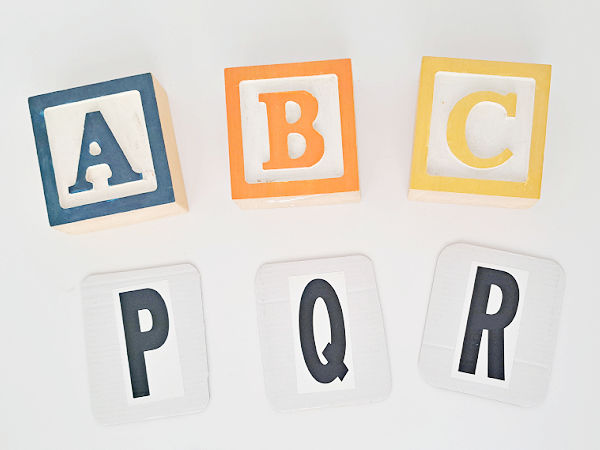
Early on, toys and activities can be made available during regular play times to generate familiarity with, and enjoyment of, the letters of the alphabet.
You might observe your preschooler identifying letters on a set of ABC blocks as he stacks them; recognizing the first letter of his name on his classroom cubby; 'writing' a letter to grandma.
You can extend these insights and experiences into your daily activities, at home or in the classroom.
This is easiest to achieve with hands-on learning, with age appropriate literacy activities.
6. Clarify Your Goal(s)
You want to teach the alphabet to your early learners, but you're not sure how to start.
- Do you need flash cards?
- Are 'letter of the week' activities valuable?
- Should students copy and print letters on work sheets?
An understanding of best practices for teaching or guiding early learners will help you plan daily literacy activities.
Your method of instruction will also be determined in part by your teaching goals.
- Do you have expectations for when kids should learn the alphabet, based on age or skill level?
- Do you want to complete a certain section of a proscribed curriculum during a school term?
- Is your preschooler asking to spell his or her name?
- Is your child required to spell his or her name before entering kindergarten?
Your goal(s) might change over time as you explore the letters of the alphabet with your preschoolers.
Related: Goals for Developing a Preschool Program
Once you have a goal in mind, you'll want to secure the best method(s) for supporting early literacy skills.
As with all things preschool, let play be the guide that introduces and reinforces letter recognition and letter sounds. This will lead to forming letters, and eventually spelling words as kids develop the appropriate skills.
Enjoy your alphabet journey.
And enjoy singing the ABC song as you wash your hands!
